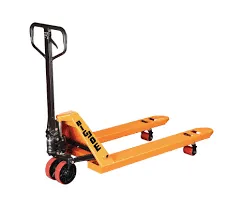


The Concept of Chain Block Lifting An Overview
Chain block lifting, often referred to as a chain hoist, is a vital mechanical tool used across various industries for lifting heavy loads with ease and precision. This device employs a system of chains, gears, and hooks that work in unison to lift, lower, or move heavy objects. Understanding the elements that constitute chain block lifting can greatly enhance the safety and efficiency of operations in warehouses, construction sites, and manufacturing plants.
At the core of a chain block lifter is its unique mechanism that utilizes a chain to drive a set of pulleys. The operator pulls on the hand chain, which engages internal gears connected to the load chain, causing the load to rise. This mechanical advantage simplifies the task of lifting, especially for loads that may exceed human capability. The chain block is versatile and can lift items ranging from small machinery components to substantial industrial equipment, making it an indispensable tool in numerous applications.
One of the key features of chain blocks is their capacity. They come in various load ratings, often ranging from 1 ton to 100 tons, or more. The specific choice depends on the intended application and the weight of the items being lifted. Moreover, the construction quality and material composition of a chain block can greatly influence its durability and effectiveness. High-quality steel chains and robust housing ensure that the block can withstand rigorous use over time, delivering consistent performance while minimizing the risk of failure.

Safety is paramount when using chain block lifting devices
. Proper training for operators is essential to ensure that they understand the correct usage and potential hazards. Operators should be well-versed in checking the equipment before use, such as inspecting the chains for wear and tear, ensuring the hooks are not open or deformed, and verifying that the hoist's mechanism is free of obstruction. Additionally, adhering to weight limits is critical overloading a chain block can lead to catastrophic failures, risking both the load and the safety of personnel nearby.Another important aspect of chain block lifting is the environment in which it operates. These devices are suitable for a variety of settings, including indoor and outdoor operations. However, factors such as weather conditions, surface stability, and proximity to other operational machinery can affect the efficacy of chain block lifting. For instance, when operating outdoors, it is vital to safeguard against wind and other elements that may interfere with the stability of a lifted load.
Chain block lifters can be categorized into various types, including manual, electric, and pneumatic versions. Manual chain hoists are operated by hand and are ideal for situations where electricity is not available or where portability is required. Electric chain hoists, on the other hand, provide faster lifting capabilities, suitable for high-volume operations. Pneumatic chain hoists operate on compressed air, making them useful in environments where electrical hazards are a concern.
In summary, chain block lifting devices are essential tools in industrial operations, allowing for effective and safe movement of heavy materials. By understanding their construction, proper usage, and safety precautions, operators can leverage the power of chain blocks to enhance productivity while minimizing risks. As industries continue to evolve, the innovation and design of chain block lifters will undoubtedly advance, further solidifying their role in efficient material handling.



